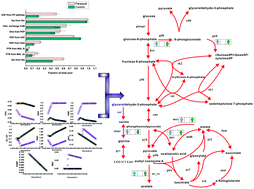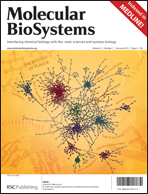The ability of a microorganism to adapt to changes in the environment, such as in nutrient or oxygen availability, is essential for its competitive fitness and survival. The cellular objective and the strategy of the metabolic response to an extreme environment are therefore of tremendous interest and, thus, have been increasingly explored. However, the cellular objective of the complex regulatory structure of the metabolic changes has not yet been fully elucidated and more details regarding the quantitative behaviour of the metabolic flux redistribution are required to understand the systems-wide biological significance of this response. In this study, the intracellular metabolic flux ratios involved in the central carbon metabolism were determined by fractional 13C-labeling and metabolic flux ratio analysis (MetaFoR) of the wild-type E. coli strain JM101 at an oxidative environment in a chemostat. We observed a significant increase in the flux through phosphoenolpyruvate carboxykinase (PEPCK), phosphoenolpyruvate carboxylase (PEPC), malic enzyme (MEZ) and serine hydroxymethyltransferase (SHMT). We applied an ε-constraint based multi-objective optimization to investigate the trade-off relationships between the biomass yield and the generation of reductive power using the in silico iJR904 genome-scale model of E. coli K-12. The theoretical metabolic redistribution supports that the trans-hydrogenase pathway should not play a direct role in the defence mounted by E. coli against oxidative stress. The agreement between the measured ratio and the theoretical redistribution established the significance of NADPH synthesis as the goal of the metabolic reprogramming that occurs in response to oxidative stress. Our work presents a framework that combines metabolic flux ratio analysis and multi-objective optimization to investigate the metabolic trade-offs that occur under varied environmental conditions. Our results led to the proposal that the metabolic response of E. coli to paraquat-induced oxidative stress is globally conserved and coordinated.

You have access to this article
 Please wait while we load your content...
Something went wrong. Try again?
Please wait while we load your content...
Something went wrong. Try again?


 Please wait while we load your content...
Please wait while we load your content...